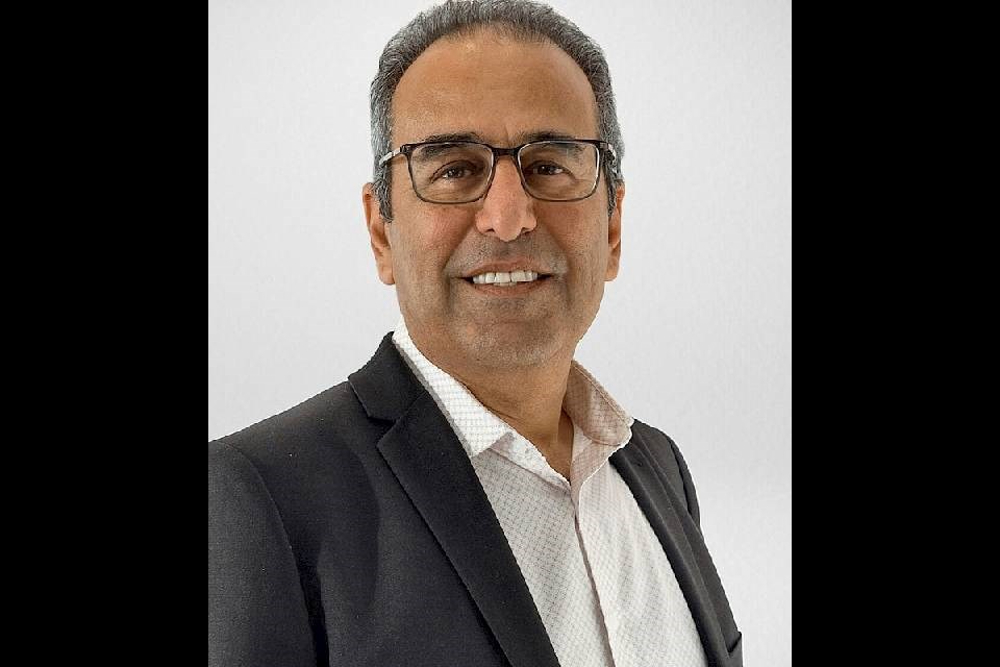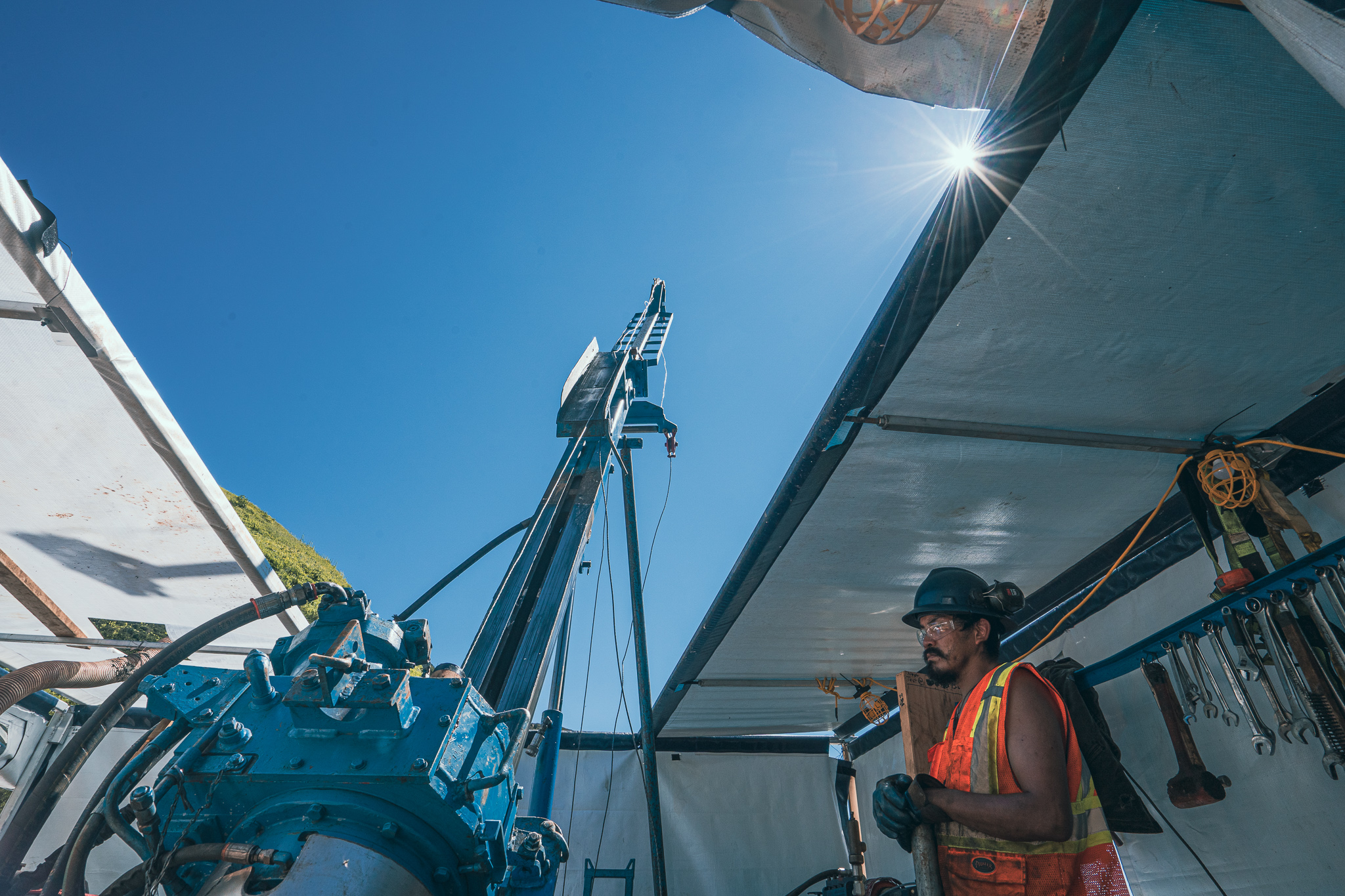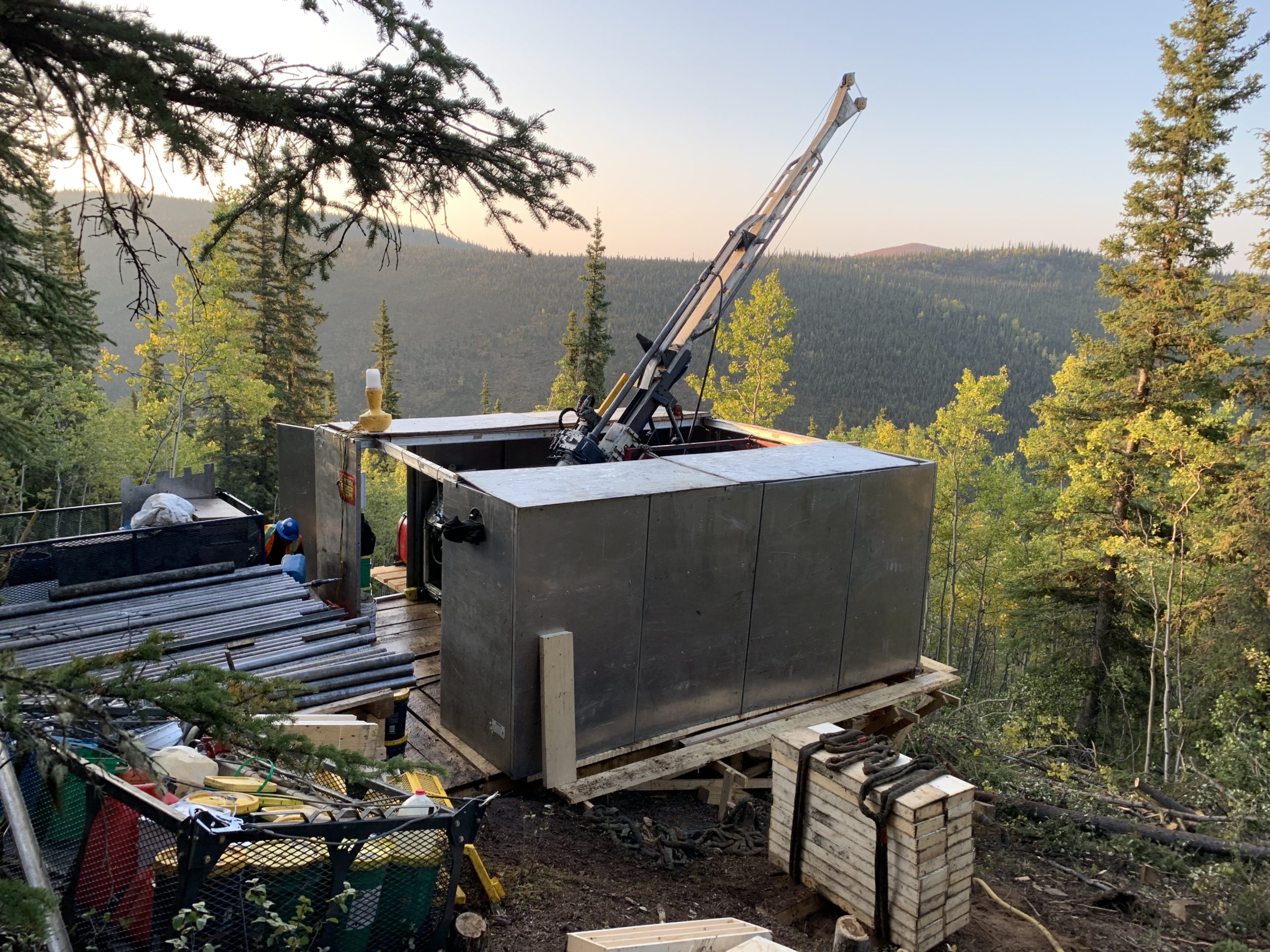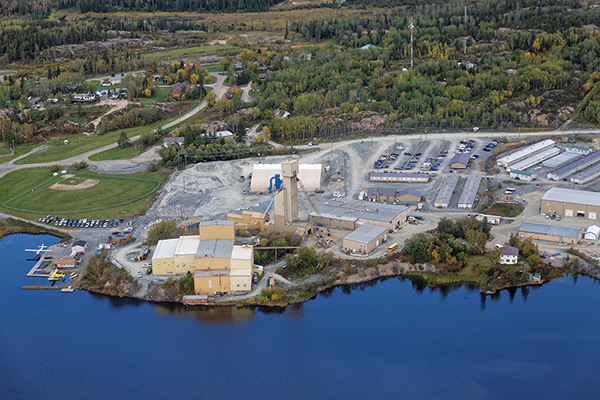TOO RICH To Ignore
The adage remains true: The best place to find gold is in a gold mine. To prove the point, Northgate Minerals of Toronto has taken a fresh look at the Young-Davidson deposit successfully mined from 1934 to 1955 by Hollinger Mines. Also of interest was the nearby Matachewan Consolidated Mines property, which produced gold from 1934 to 1954 and again in 1981-82. The combined historical output of the two properties was a million ounces of gold.
Today, Northgate’s vision is to build a financially robust and long-life gold mine in one of the best mining jurisdictions in the world. Acquired in November of 2005, Northgate has quickly ramped up exploration activities at Young-Davidson and has spent over $70 million to date in keeping with an accelerated development plan. The results have been exceptional, quadrupling the existing resource base to almost 4.0 million oz of gold, of which 2.8 million oz are in reserves. Northgate is breathing new life at Young-Davidson and is committed to bringing the property back into production in 2012.
The Young-Davidson/Matachewan (YD/MCM) property is located 60 km west of Kirkland Lake, Ont., and 3 km west of the small town of Matachewan. The property lies in the southwest part of the gold-rich Abitibi Greenstone Belt and is cut by the Larder Lake-Cadillac Fault zone.
As many as five distinct types of mineralization have been identified at Young-Davidson, but historical YD production and 60% of the MCM ore came from syenite-hosted gold mineralization. Northgate’s open pit and underground mining plans have been designed around this type of ore. Gold mineralization is also hosted by Timiskaming sediments, ultramafics and the hanging wall contact.
The pre-feasibility study completed in July 2009 is based on a 6,000-t/d operation with a life of 15 years. Production during the first two years will come from an open pit at a rate of 100,000 oz/yr. Mining and crushing will be performed by a contractor. Northgate anticipates the use of 8-m3 front-end loaders and 55-tonne haul trucks.
During the open pit mining, approximately 5.0 million tonnes of ore and 13.5 million tonnes of waste rock will be mined. The waste rock will be used for construction of the tailings dam and for backfill during the underground mining phase.
Underground mining
In years three through 15, ore will be mined from underground. The geometry of the deposit and the stable ground con- ditions will support a low-cost bulk mining operation. During the first 10 years of underground mining, gold production will be 190,000 oz per year at an estimated net cash cost of $326/oz.
Using a gold price of US$925/oz and a U.S./Canada exchange rate of $1:$0.85, the after-tax operating cash flow will be $736 million. The net present value (5%) will be $370 million with an internal rate of return of 18.4%.
The mineralized lenses occur from near surface to a depth of 1,400 metres, dipping steeply from almost vertical to 60 and averaging 70. The lenses vary from five-metres to over 40-metres thick. Consequently, several mining methods will be employed. Two-thirds of the stopes will be developed for longhole shrinkage and sublevel caving. Northgate anticipates that the average stope size will be 250,000 tonnes, although some may be as large as 1.0 million tonnes. The other third of the tonnage will come from longitudinal retreat stopes. They will be five-to 10-metre-wide zones with 30-metre sublevels.
The YD underground deposit is currently accessible by a ramp that has been driven from surface to a depth of 460 metres during advanced exploration. The finished ramp will extend to a depth of 1,450 metres and be 8.6 km long. Ore extraction, however, will be via a new 1,500 metre production shaft
Northgate is currently working on the definitive YD feasibility study. It will be available early this year. The feasibility study will, among other things, detail the optimum shaft design and construction methodology. The most likely outcome, according to Peter MacPhail (Northgate’s COO) is that the existing 720 metre No. 3 shaft at MCM will be deepened to 1,500 metres, and then a new 5.5 metre production shaft will be raised to surface. Work will include modifications to the head-frame, a two-drum skipping hoist, and a loading pocket on the 9800 level. The No. 3 shaft is located 200 metres northeast of the planned location for the new shaft.
Deepening, raising, furnishing and supplying equipment for two shafts will have a cost of between $80 million and $100 million. The new production shaft will hoist 6,000 t/d ore and 1,000 t/d waste based on 16 hours of skipping daily.
Northgate has not yet chosen the contract mining firm for the pit or made final selections on the suppliers of underground equipment, but those decisions will be made soon.
The deposit is divided roughly into four vertical mining horizons: the 9680 horizon or the upper zone (190 metres below surface); the 9440 horizon and upwards to the 9680 horizon; the 9200 horizon upwards to 9440; and 8960 horizon.
Unconsolidated open pit and development waste rock will be used as backfill. The waste rock will be dropped though Alimak raises that extend from the surface to the 8960 level.
Northgate has chosen to redevelop an existing tailings storage facility on the west side of the claim block that was used during the 1940s and 1950s. Development waste rock will be used in the construction of the dams on the east and west sides of the facility.
Mineral processing
The mill flowsheet includes autogenous grinding (AG) followed by gravity and carbon-in-leach (CIL) circuits. Northgate will move and modify a 6.7×11-metre ball mill from its Kemess copper-gold mine in British Columbia to perform the AG grinding. The slurry will be cycloned, and the underflow returned to the AG mill and the overflow flows by gravity to the flotation circuit.
“Except for the CIL circuit, we are using the same tried-and-true process that the old timers used,” said MacPhail. “Grinding, flotation, regrinding and cyanidation.”
A portion of the autogenous mill discharge will feed the gravity concentration circuit. The concentrate will be transferred once a day a to an intensive cyanidation unit. The pregnant solution reports to an electrowinning circuit and the tails will be pumped to the flotation concentrate regrinding circuit.
The flotation circuit consists of four tank cells. Flotation concentrate is thickened and pumped to the regrind circuit that includes a vertical tower mill where the solids are reduced to 80% passing 15 m. The tower mill discharge reports to the CIL circuit. Flotation tails are also thickened and pumped to the combined CIL circuit. Overflow from both thickeners reports to the mill process water tank and reused.
Reground flotation concentrate will report to a pre-leach tank. It overflows this tank into a series of four CIL tanks with a total of 48 hours retention time. Loaded carbon is removed from the first tank and pumped to the carbon stripping circuit for elution.
Flotation tailings and the previously leached flotation concentrate report to the combined CIL circuit which has three leach tanks with a total retention time of 24 hours. Tailings from the combined leach circuit are the final tailings product. They pass through a SO2-air cyanide destruction circuit prior to impoundment in the tailings storage facility.
What lies ahead?
Exploration at the Young-Davidson mine may very well extend the life of the project. A new gold zone has already been intersected near the 9500 mining level. Core from that area returned an assay of 2.92 g/t over 10.5 metres. Even two of the shaft condemnation holes, at the site where a new headframe is planned, intersected mineralization 300 metres east of known reserves and resources.
Near-surface drilling in the vicinity of the old Matachewan No. 3 shaft has intersected good grades, including 7.6 g/t Au over 13.
5 metres and 13.7 g/t over 2.0 metres. The property has potential for four additional small pits. More diamond drilling is planned to test the extent of the mineralization.





Comments